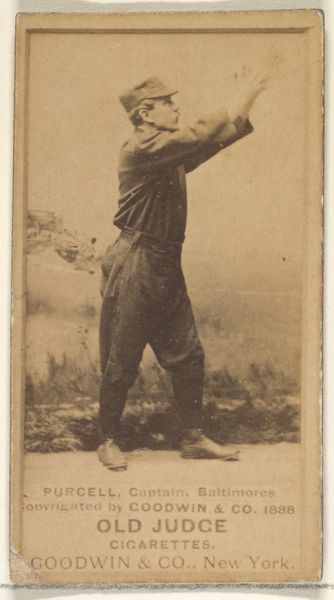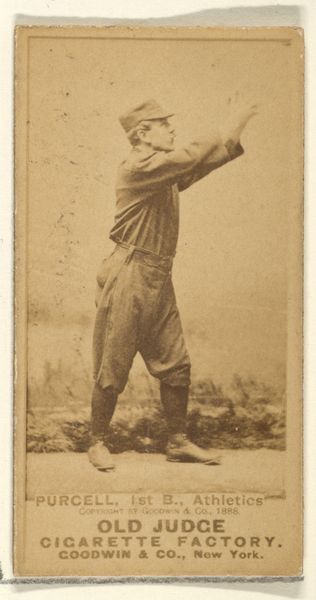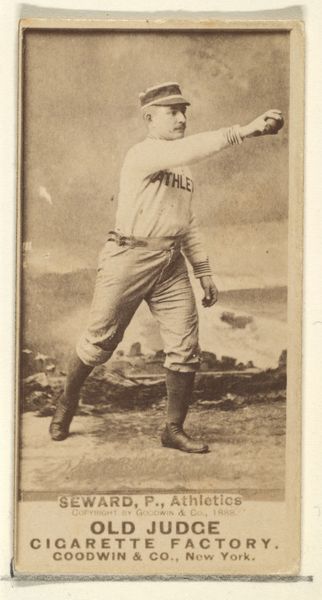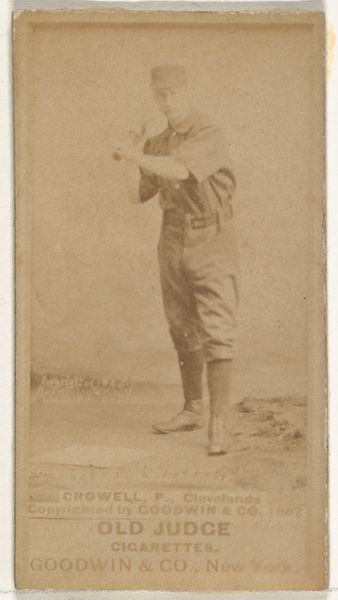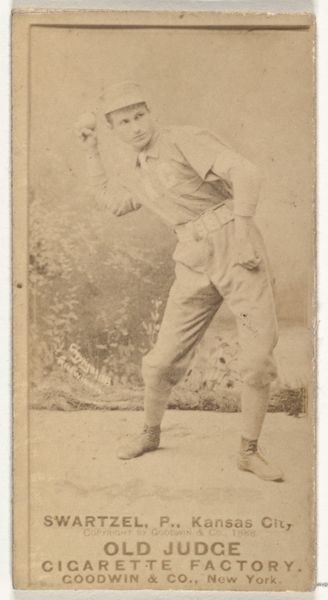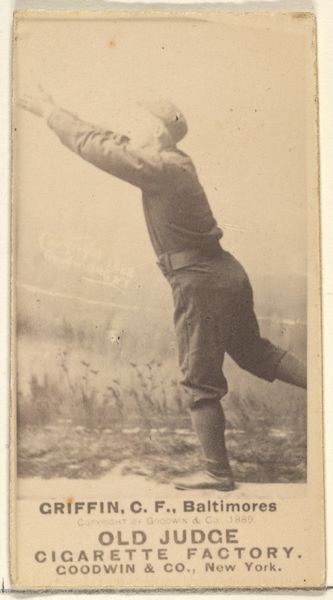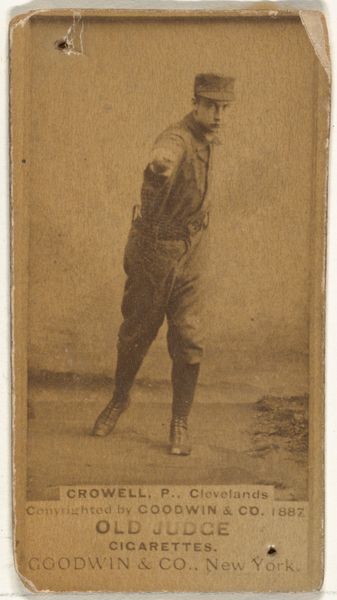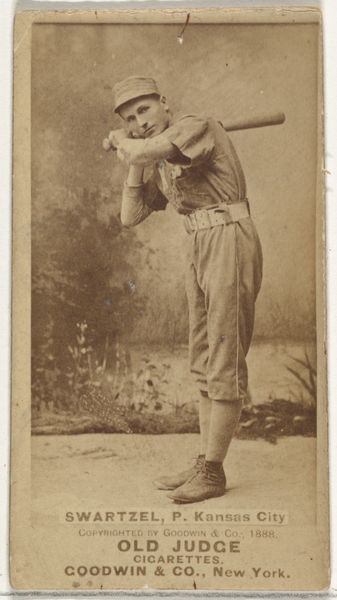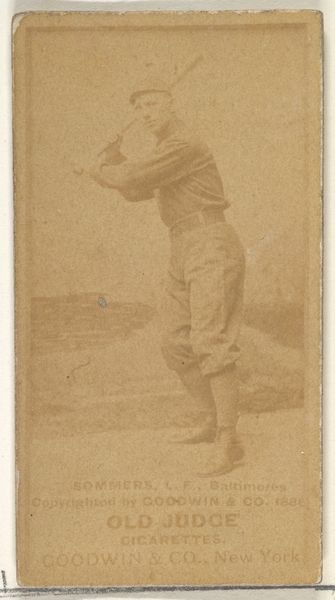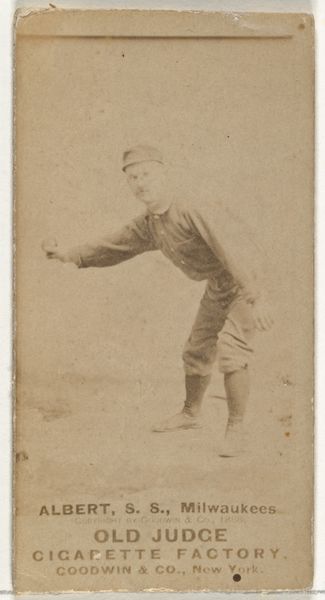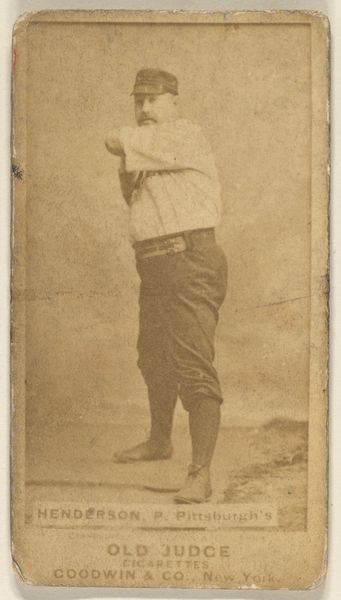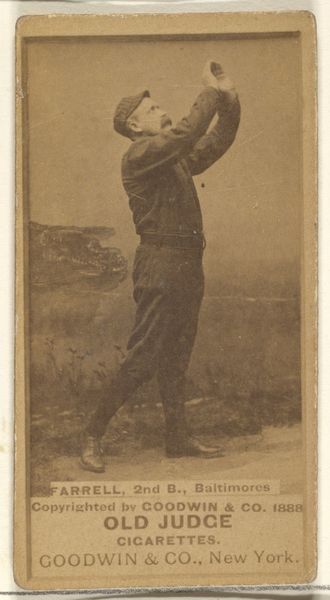
John T. McGlone, 3rd Base, Cleveland, from the Old Judge series (N172) for Old Judge Cigarettes 1887
0:00
0:00
drawing, print, photography
#
portrait
#
drawing
#
toned paper
#
photo restoration
# print
#
appropriation
#
baseball
#
figuration
#
photography
#
19th century
#
men
#
genre-painting
#
realism
Dimensions: sheet: 2 11/16 x 1 3/8 in. (6.9 x 3.5 cm)
Copyright: Public Domain
Curator: So, here we have a piece titled "John T. McGlone, 3rd Base, Cleveland, from the Old Judge series (N172) for Old Judge Cigarettes." It’s attributed to Goodwin & Company from 1887. What’s your initial reaction? Editor: Sepia dreams of Americana! There's something almost ghostly about the image quality, yet the baseball player's pose feels so alive, caught mid-throw, ready to launch into action. You can almost smell the ballpark peanuts and hear the crack of the bat, or maybe that’s just me. Curator: Not just you. This photograph—or rather, the print made from it—is a fascinating intersection of sport, industry, and popular culture. It's from a series of baseball cards included in packs of Old Judge Cigarettes. Consider how this trivial item used photography, lithography, and commerce to connect with the public and valorize sports. Editor: So, it was essentially an early form of advertising! I imagine kids trading these back then, dreaming of hitting home runs, unaware that years later, art snobs would obsess over the cards. It does raise some compelling ideas around labor, consumption, and value. It is literally advertising—a base form—and that makes it okay to cut through a few of our modern conceptions about the preciousness of art, perhaps. Curator: Precisely! The seemingly simple image involved the labor of photographers, printers, and factory workers, all contributing to the production of these ephemeral objects. Note too how tobacco companies promoted an ideal masculinity using idealized depictions of baseball players, connecting to contemporary cultural trends. Editor: Yes, and seeing it now, as an image, separated from its original context, it transforms. It's more than just a baseball card; it's a time capsule containing echoes of 19th-century values, anxieties, and ambitions. And, it kind of reminds me of how our modern sport-stars continue to hock garbage, hawking a lifestyle to which we might not actually have access. We might have, in this image, a premonition. Curator: Right, and beyond the content, there's also the process: photography was developing alongside industrialization. Cards like these democratized the medium; they’re portable images for the masses. What are we really willing to accept for some bubblegum? What about Cigarettes? How has media’s relationship with public health changed, and where do the threads still connect? Editor: The image is just so present with absence—faded but unforgettable, both antique and eternal. McGlone and his card both exist—and don’t. In one breath. It sort of transcends the sport itself. Curator: A thought-provoking piece with layers upon layers of historical context! Thanks! Editor: Likewise, until next time.
Comments
No comments
Be the first to comment and join the conversation on the ultimate creative platform.
